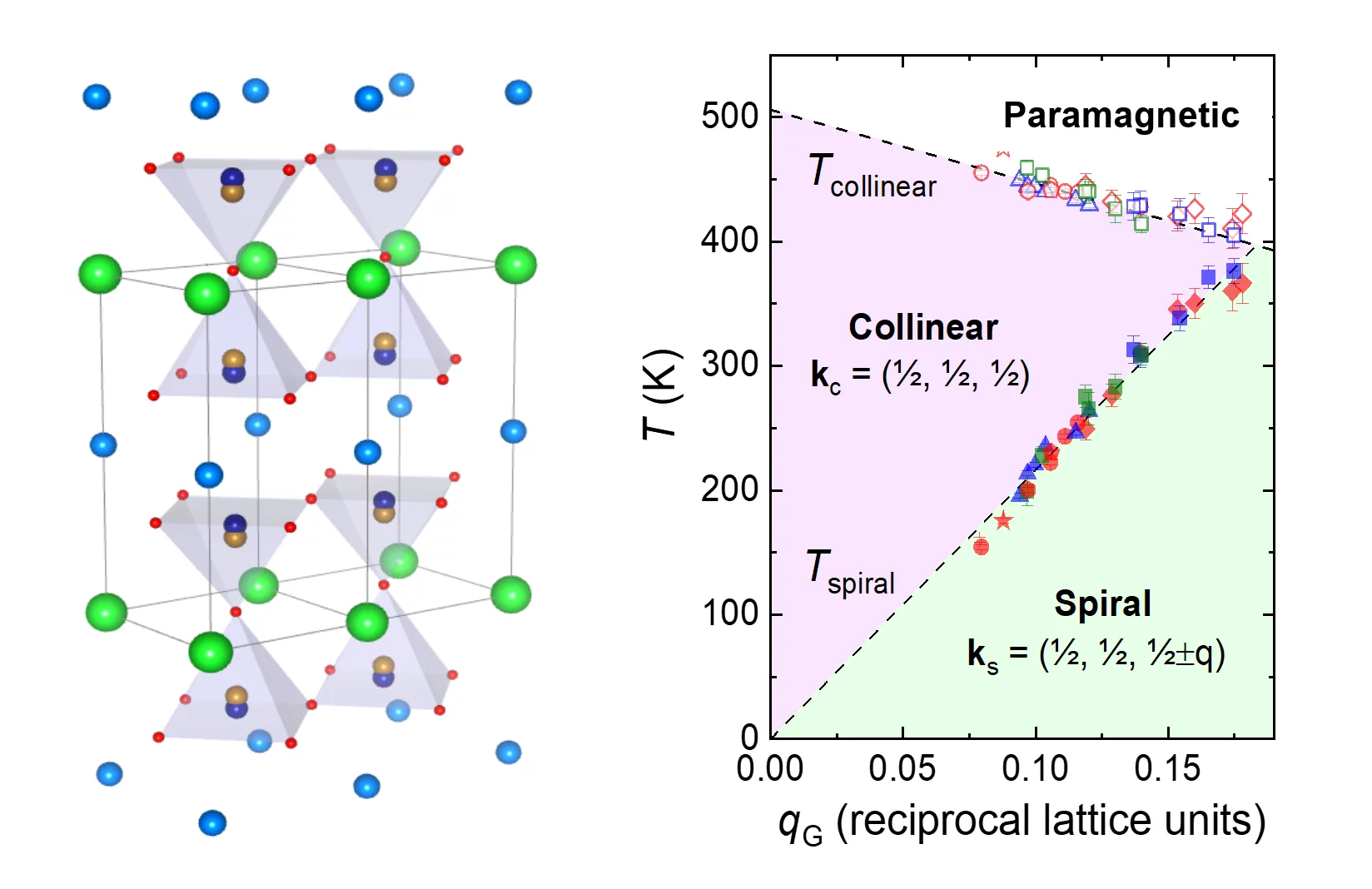Frustrated magnets with ordered magnetic spiral phases that spontaneously break inversion symmetry have received significant attention from both fundamental and applied sciences communities due to the experimental demonstration that some of these materials can couple to the lattice and induce electric polarization. In these materials, the common origin of the electric and magnetic orders guarantees substantial coupling between them, which is highly desirable for applications. However, their low-magnetic ordering temperatures (typically < 100 K) greatly restrict their fields of application. Recently, investigations on Cu/Fe-based layered perovskites uncovered an unexpected knob to control the stability range of a magnetic spiral-chemical disorder-, which has been successfully employed to stabilize magnetic spiral phases at temperatures as high as 400 K.
These unexpected observations, which are hard to conciliate with traditional magnetic frustration mechanisms, were recently rationalized in terms of an original, local frustration model that explicitly accounts for the presence of disorder. In this mini-review, we summarize the main experimental observations on Cu/Fe layered perovskites, which show excellent agreement with the predictions of this novel magnetic frustration mechanism. We also present different strategies aimed at exploiting these experimental and theoretical developments for the design of materials featuring magnetoelectric spirals stable up to temperatures high enough for daily-life applications.
Facility: SINQ, SLS
Reference: A. Romaguera and M. Medarde, Frontiers in Materials, 19 August (2024)
Read full article: here


